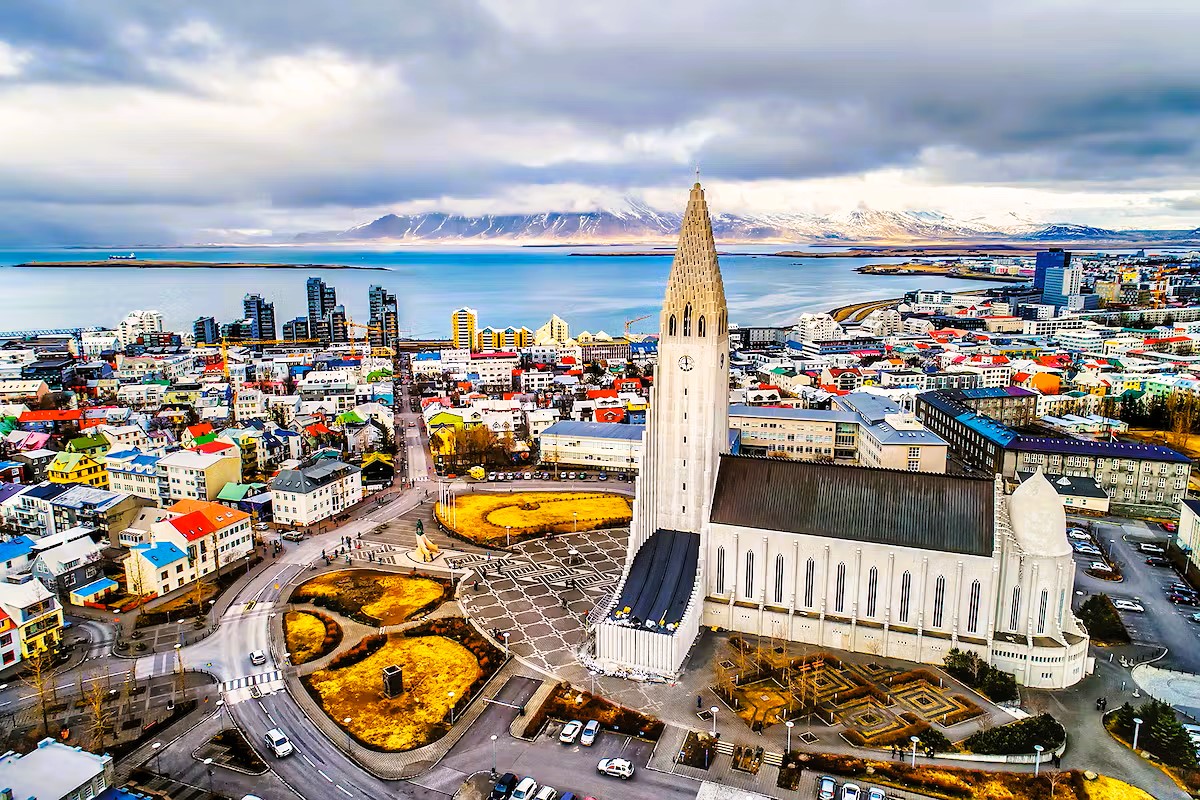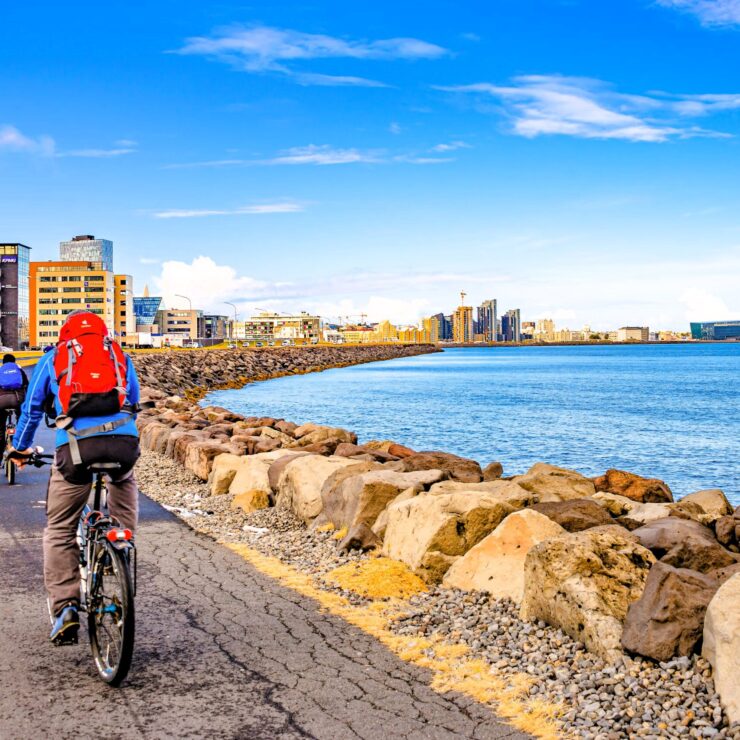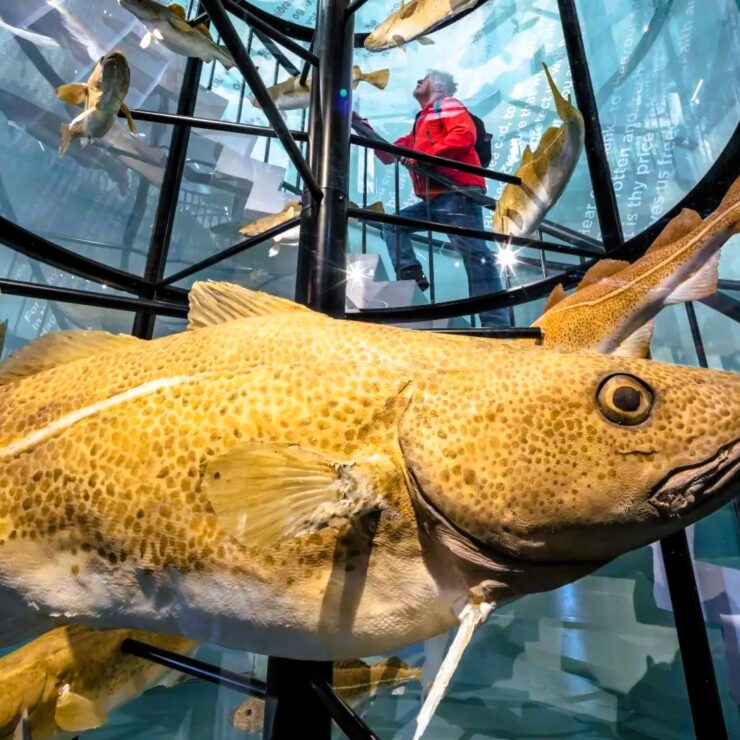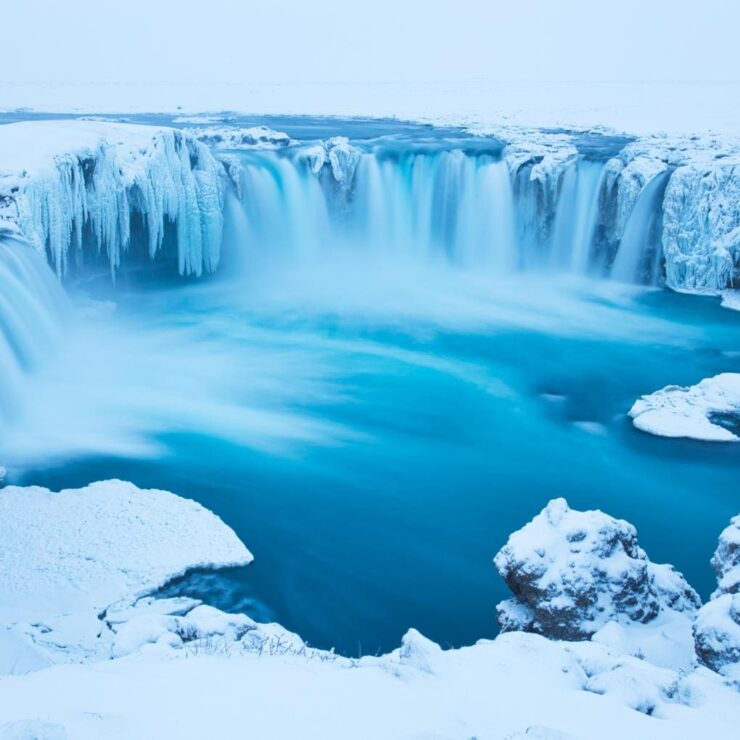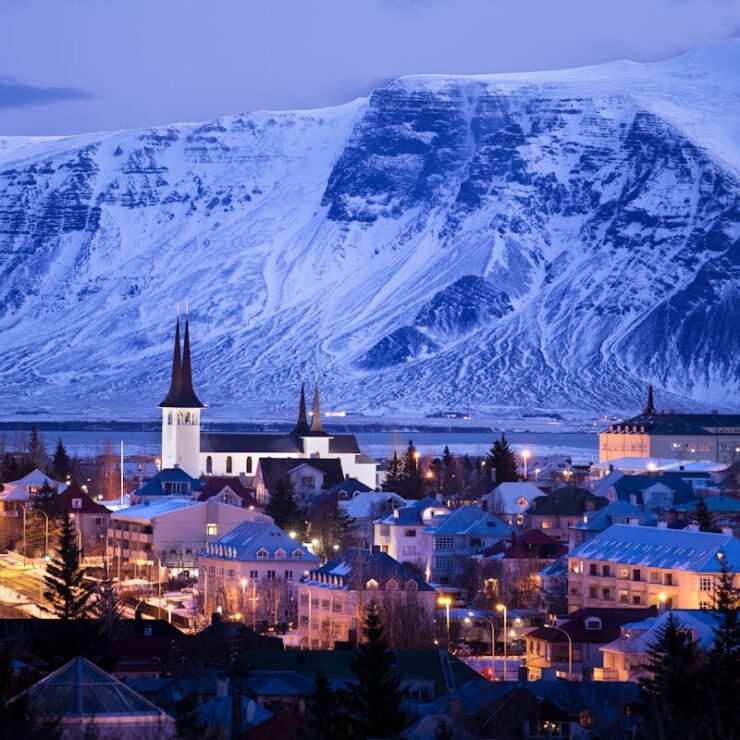Welcome to Reykjavík, the vibrant capital of Iceland and the northernmost capital city in the world! Nestled between dramatic mountains and the vast Atlantic Ocean, Reykjavík is a unique blend of natural beauty, rich history, and modern Nordic charm. Despite its small size—with a population of just over 130,000—it punches well above its weight as a cultural and tourist hub. Whether you’re using Reykjavík as a base for exploring Iceland’s iconic landscapes or dedicating a few days to the city itself, there’s no shortage of must-see sights to fill your itinerary. In this comprehensive guide, I’ll walk you through Reykjavík’s essential attractions, insider tips for making the most of your visit, and practical advice to ensure a memorable experience in this captivating city.
Why Reykjavík Should Be on Your Travel Radar
Reykjavík is often described as a gateway to Iceland’s natural wonders like the Golden Circle or the Blue Lagoon, but the city itself is a destination worth exploring. Its compact size makes it easy to navigate on foot, while its eclectic mix of colorful houses, cutting-edge architecture, and lively cultural scene offers something for every traveler. From historic landmarks to quirky museums and stunning coastal views, Reykjavík is a city of contrasts where old meets new, and nature is never far away. Let’s dive into the must-see sights that should be on your checklist!
1. Hallgrímskirkja: Reykjavík’s Iconic Church
- Location: Skólavörðuholt Hill, central Reykjavík
- Why Visit: Towering at 74.5 meters (244 feet), Hallgrímskirkja is Reykjavík’s most recognizable landmark and one of the tallest structures in Iceland. Designed to resemble the basalt columns found in Iceland’s natural landscapes, this Lutheran church is not only a place of worship but also a symbol of national identity.
- Highlights: Take the elevator to the observation deck for panoramic views of the city, harbor, and surrounding mountains. Admire the minimalist interior and the massive pipe organ, which has over 5,000 pipes. Outside, don’t miss the statue of Leif Erikson, the Norse explorer who is believed to have discovered North America around the year 1000.
- Tips: Entry to the church is free, but there’s a small fee (around 1,000 ISK or $7 USD) to access the tower. Visit early in the morning or late in the evening to avoid crowds. Dress warmly if you’re heading up to the observation deck, as it can be windy.
- Time Needed: 1–1.5 hours
2. Harpa: A Modern Architectural Marvel
- Location: Austurbakki 2, by the Old Harbour
- Why Visit: Harpa is Reykjavík’s stunning concert hall and conference center, opened in 2011. Its glass façade, inspired by Iceland’s basalt landscapes and the Northern Lights, shimmers with a kaleidoscope of colors, especially when lit up at night. It’s a hub for cultural events and a testament to Iceland’s modern design sensibility.
- Highlights: Attend a concert or performance if your schedule aligns (check the calendar on Harpa’s website). Even if you’re not catching a show, explore the building’s public spaces, enjoy a coffee at the on-site café, or simply photograph its striking exterior from different angles.
- Tips: Entry to the building is free unless you’re joining a guided tour (around 2,000 ISK or $15 USD) or attending an event. Harpa is a short walk from Hallgrímskirkja, so pair these two sights for an efficient morning or afternoon.
- Time Needed: 30 minutes–1 hour (longer if attending an event)
3. Laugavegur: Reykjavík’s Main Shopping Street
- Location: Central Reykjavík, running from Bankastræti to Kringlan
- Why Visit: Laugavegur is the beating heart of Reykjavík’s urban life. This lively street is lined with boutique shops, trendy cafés, restaurants, and bars, offering a glimpse into the city’s contemporary culture. It’s the perfect place to pick up Icelandic souvenirs, from woolen sweaters to local art.
- Highlights: Browse for unique gifts at shops like Handknitting Association of Iceland for authentic lopapeysa (Icelandic sweaters). Stop for a coffee or pastry at Sandholt, a beloved local bakery. At night, Laugavegur transforms into a hotspot for nightlife with bars and live music venues.
- Tips: Wear comfortable walking shoes as the street can get busy, and bring cash for smaller vendors, though most places accept cards. If you’re visiting in winter, check out the festive decorations during the holiday season.
- Time Needed: 1–2 hours (or more if shopping and dining)
4. The Old Harbour: A Window to Reykjavík’s Maritime Roots
- Location: West of downtown, near Harpa
- Why Visit: The Old Harbour is where Reykjavík’s history as a fishing village comes to life. Once the center of the city’s economy, it’s now a scenic area with a mix of working boats, whale-watching tour operators, and trendy eateries. It’s also a great spot to soak in views of the ocean and Mount Esja in the distance.
- Highlights: Book a whale-watching or puffin tour (many depart from here, costing $60–$100 USD). Walk along the harbor to see fishing boats and enjoy the salty sea breeze. Grab a meal at one of the seafood restaurants, like Icelandic Street Food, known for its fish soup served in bread bowls.
- Tips: Dress in layers as the harbor area can be windy. If you’re interested in maritime history, pop into the nearby Reykjavík Maritime Museum (entry around 1,800 ISK or $13 USD).
- Time Needed: 1–2 hours (longer if taking a boat tour)
5. Sun Voyager (Sólfar): A Symbol of Hope and Discovery
- Location: Sæbraut, near the Old Harbour
- Why Visit: The Sun Voyager is a striking stainless steel sculpture resembling a Viking ship, created by artist Jón Gunnar Árnason. Unveiled in 1990, it symbolizes the spirit of adventure, dreams, and the search for new horizons—a fitting tribute to Iceland’s seafaring history.
- Highlights: Take photos with the sculpture against the backdrop of the ocean and Mount Esja. Visit at sunrise or sunset for a magical glow on the steel, or in winter when it’s often framed by snow or the Northern Lights if you’re lucky.
- Tips: It’s a quick stop, just a 10-minute walk from Harpa or the Old Harbour. There’s no entry fee, and the area is always accessible, but it can get crowded with photographers, so be patient for your perfect shot.
- Time Needed: 20–30 minutes
6. Perlan (The Pearl): Nature and Technology Combined
- Location: Öskjuhlíð Hill, about 2 km from downtown
- Why Visit: Perlan is a futuristic glass dome that offers an immersive look into Iceland’s natural wonders through state-of-the-art exhibits. It’s also a fantastic spot for panoramic views of Reykjavík and beyond. Originally built as a water storage facility, it has been transformed into a cultural and educational landmark.
- Highlights: Explore the interactive “Wonders of Iceland” exhibition, featuring a man-made ice cave, a 360-degree Northern Lights show, and displays on volcanoes and glaciers. Head to the observation deck for stunning city views, and enjoy a drink or meal at the revolving restaurant.
- Tips: Entry costs around 4,900 ISK ($35 USD) for adults, with discounts for children and families. Book tickets online to skip the line. Take a bus (lines 18 or 13) or a taxi if you’re not up for the uphill walk from downtown.
- Time Needed: 2–3 hours
7. Tjörnin Lake: A Peaceful Urban Oasis
- Location: Central Reykjavík, near City Hall
- Why Visit: Tjörnin, meaning “The Pond,” is a serene lake in the heart of the city, surrounded by charming buildings and walking paths. It’s a favorite spot for locals to relax and feed the ducks, geese, and swans that call the lake home.
- Highlights: Stroll around the lake for a quiet escape from the city buzz. In winter, Tjörnin often freezes over, turning into a natural ice-skating rink. Nearby, you’ll find the modern Reykjavík City Hall and the historic Fríkirkjan church, both worth a quick peek.
- Tips: Bring bread or birdseed if you want to feed the birds (check local guidelines first). It’s a great spot for a picnic in summer or a short reflective walk year-round. No entry fee, and it’s easily accessible on foot from most central attractions.
- Time Needed: 30 minutes–1 hour
8. National Museum of Iceland: Dive into History and Culture
- Location: Suðurgata 41, near the University of Iceland
- Why Visit: For a deep dive into Iceland’s past, the National Museum is a must. It traces the country’s history from the Viking Age to the present through artifacts, interactive displays, and detailed exhibits, offering insight into the resilience and creativity of the Icelandic people.
- Highlights: See the Valþjófsstaður door, a 13th-century carved wooden artifact, and learn about the sagas, Iceland’s medieval literary treasures. The museum also covers modern history, including the struggle for independence from Denmark.
- Tips: Entry is around 2,500 ISK ($18 USD), with free admission for children under 18. Audio guides are available for a small fee. It’s a 15-minute walk from downtown, or you can take a bus. Visit on a rainy day for an indoor activity.
- Time Needed: 1.5–2 hours
9. Árbær Open Air Museum: Step Back in Time
- Location: Kistuhylur 4, in the Árbær district (about 8 km from downtown)
- Why Visit: This unique museum offers a glimpse into Iceland’s past with a collection of preserved buildings from the 19th and early 20th centuries, relocated to create a historical village. It’s a living history lesson on how Icelanders once lived.
- Highlights: Wander through old turf houses, a blacksmith’s workshop, and a 1930s grocery store. During summer or special events, staff in period costumes demonstrate traditional crafts and daily life.
- Tips: Entry costs around 2,200 ISK ($16 USD). Take bus line 19 to get there, as it’s a bit outside the city center. Check the museum’s schedule for seasonal events like Christmas markets or sheep shearing demonstrations.
- Time Needed: 1.5–2 hours
10. Bonus Stop: The Blue Lagoon or a Local Geothermal Pool
- Location: Blue Lagoon is 45 minutes from Reykjavík; local pools like Laugardalslaug are within the city
- Why Visit: No trip to Iceland is complete without experiencing its geothermal culture. While the Blue Lagoon is world-famous for its milky-blue waters and luxurious spa vibe, Reykjavík also has several public geothermal pools that are more affordable and offer a local experience.
- Highlights: At the Blue Lagoon, relax in warm, mineral-rich waters surrounded by lava fields (book in advance; entry starts at $60 USD). For a budget-friendly alternative, visit Laugardalslaug, the city’s largest pool complex, with hot tubs, a steam bath, and a water slide (entry around 1,100 ISK or $8 USD).
- Tips: Bring a swimsuit, towel, and flip-flops. If visiting the Blue Lagoon, arrange transportation as it’s near Keflavík International Airport, not in Reykjavík itself. Local pools are family-friendly and less touristy.
- Time Needed: 2–3 hours for a pool visit; half a day for the Blue Lagoon including travel
Practical Tips for Exploring Reykjavík
- Getting Around: Reykjavík is very walkable, especially in the downtown area. For farther sights like Perlan or Árbær, use the city’s efficient Strætó bus system (single fare around 490 ISK or $3.50 USD) or rent a bike. Taxis and ride-sharing apps like Uber are available but expensive.
- Timing: Many attractions are open year-round, but summer (June–August) offers long daylight hours, while winter (November–March) brings festive vibes and chances to see the Northern Lights right from the city (try areas like Grotta Lighthouse with minimal light pollution).
- Weather: Iceland’s weather is unpredictable—rain, wind, and sudden temperature drops are common. Pack waterproof clothing, layers, and sturdy shoes no matter the season.
- Budget: Reykjavík can be pricey. Save money by eating at casual spots like food trucks (try Bæjarins Beztu Pylsur for iconic Icelandic hot dogs, around 500 ISK or $3.50 USD) and using free walking tours to explore the city.
- Language: Most Icelanders speak excellent English, so communication is rarely an issue. Learning a few basic phrases like “Takk” (thank you) is appreciated, though!
Suggested 2-Day Itinerary for Reykjavík
Day 1: Downtown and Cultural Highlights
- Morning: Start at Hallgrímskirkja for city views, then walk to Laugavegur for shopping and a coffee break.
- Midday: Visit Harpa and stroll along the Old Harbour. Grab lunch at a nearby seafood spot.
- Afternoon: Stop by the Sun Voyager for photos, then relax at Tjörnin Lake.
- Evening: Enjoy dinner downtown and explore Reykjavík’s nightlife if you’re up for it.
Day 2: History and Relaxation
- Morning: Head to the National Museum of Iceland to learn about the country’s history.
- Midday: Visit Árbær Open Air Museum for a taste of old Iceland. Have a light lunch nearby.
- Afternoon: Explore Perlan for interactive exhibits and panoramic views.
- Evening: Unwind at a local geothermal pool like Laugardalslaug, or splurge on a trip to the Blue Lagoon if time allows.
Why Reykjavík Will Steal Your Heart
Reykjavík may be small, but it’s brimming with personality. It’s a city where you can marvel at cutting-edge architecture one moment and step into a Viking saga the next. Whether you’re gazing at the ocean from the Sun Voyager, soaking in a geothermal pool, or sipping coffee on a colorful street, Reykjavík offers a uniquely Icelandic experience that blends urban life with untamed nature. It’s the perfect introduction to Iceland—and for many, a place they can’t wait to return to.
Have you visited Reykjavík, or are you planning your trip? What sights are on your must-see list? Drop your thoughts, questions, or tips in the comments—I’d love to hear from you! Safe travels, and enjoy your time in this incredible city!


